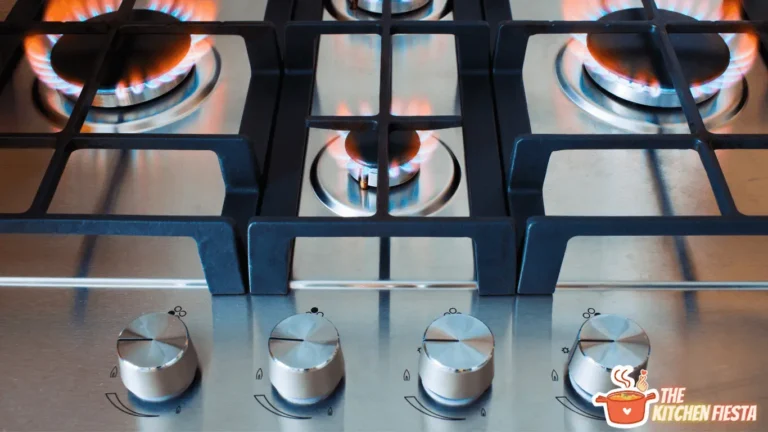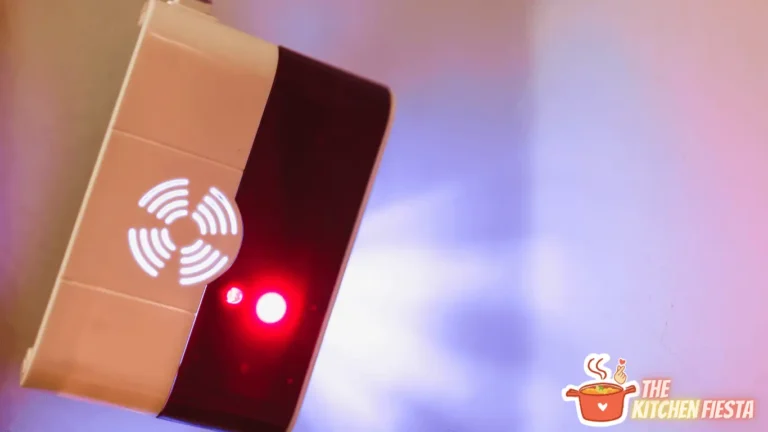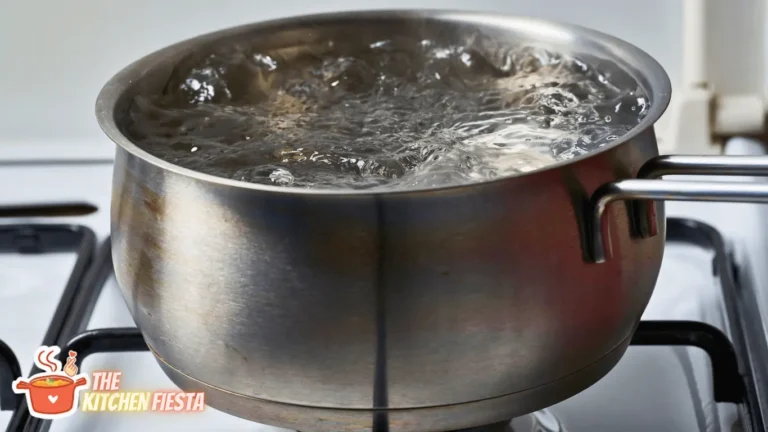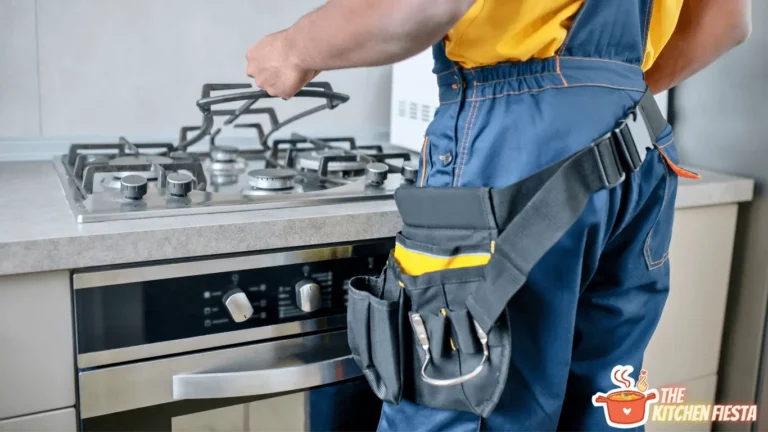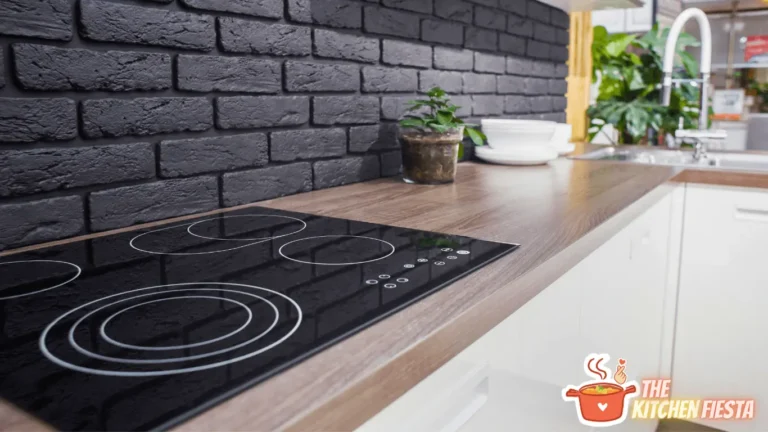Does a Gas Stove Need a Dedicated Circuit? Answering the Code Question
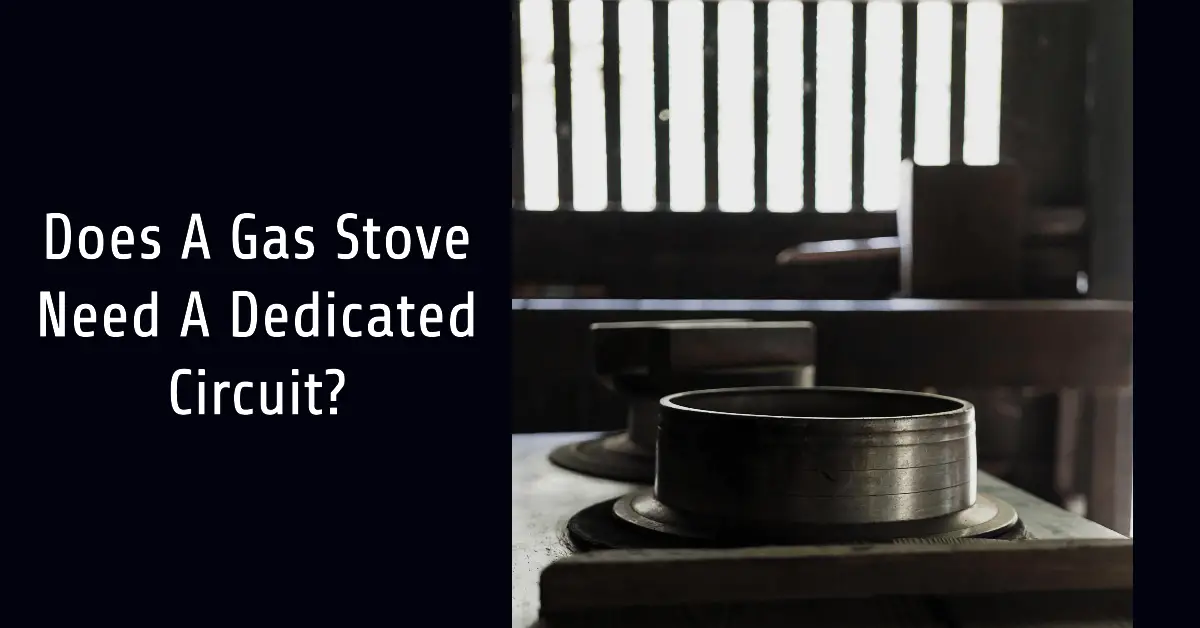
If you’re installing a new gas stove in your kitchen, you may be wondering: does a gas stove require its own dedicated kitchen circuit according to code?
The answer is yes – all gas stoves, whether natural gas or propane, do legally need a 120-volt, 20-amp dedicated circuit in the kitchen according to the National Electrical Code (NEC). This code requirement exists for good reason: gas stove operation depends on a steady electrical power supply for safety and performance.
In this complete guide, we’ll cover everything you need to know about dedicating an electrical circuit for your new gas stove. You’ll learn:
- The specific NEC code mandating a dedicated stove circuit
- Why gas stoves can’t share a circuit with other appliances
- How much it costs to install a new 20-amp kitchen circuit
- Tips for installing a gas stove circuit to meet safety codes
Let’s start by reviewing the definitive electrical code for stove circuits.
NEC Code Requirement for Dedicated Gas Stove Circuits
The National Electrical Code (NEC) is the legal standard for safe electrical installations in the United States. This is the code enforced by local inspectors.
According to NEC code 210.52(B)(2), gas stoves must have a dedicated 120-volt, 20-amp kitchen branch circuit. This means the stove needs its own circuit, not shared with other kitchen appliances.
The dedicated circuit is required whether you are:
- Installing a new gas stove in new kitchen construction
- Replacing an existing gas stove
- Converting from electric to gas stove
NEC 210.52(B)(2) applies to both natural gas and liquid propane (LP) gas stoves. So if you are switching to propane tank gas, the same dedicated circuit is still required.
This NEC requirement has been in place for many code cycles. But it is still news to some homeowners and contractors planning a kitchen remodel. Verifying a dedicated circuit for the gas stove is an important part of any stove installation.
Why Gas Stoves Can’t Share Electrical Circuits
At first glance, needing a dedicated circuit may seem odd for an appliance that burns gas. But today’s gas stoves rely on electricity to operate safely and properly.
Here are 4 key reasons a gas stove cannot share a circuit:
1. Avoid Overloads and Trips
Gas stove igniters, control boards, and convection fans draw a lot of amperage. If these components compete for power with other appliances, it can overload and trip the circuit.
A shared circuit means the stove risks reduced voltage or losing power completely if another appliance on the circuit like the microwave or refrigerator kicks on.
2. Prevent Electrical Faults
Voltage drops and power fluctuations on overloaded electrical circuits frequently lead to faults or damage in stove boards and igniters.
Running the stove on an undersized shared circuit is an unsafe fire hazard and will lead to performance issues or failure down the line.
3. Enable Proper Stove Operation
Modern gas stoves have electronic and electric components that require steady, consistent electrical power to operate properly:
- Ignition systems – Electronic igniters require strong amperage to generate spark or glow plug heat to ignite the gas burners. Weak or fluctuating power can lead to ignition failure.
- Valves – Gas control valves are electronically activated and need constant power to function. A shared circuit can lead to slow valve response and burner issues.
- Displays and clocks – Stove displays, clocks, and touchscreens need steady power flow without fluctuations or drops.
- Oven fans – Gas ovens with electrical convection fans require a powerful, dedicated circuit to run without problems.
4. Ensure Safe Use if Other Appliances Fail
Finally, a dedicated stove circuit means you can safely use the gas burners if another kitchen appliance fails and trips the main kitchen circuit.
The stove needs to function safely even if the refrigerator compressor stalls or a microwave fault kicks the shared circuit offline.
Dedicated Circuits in Kitchen Remodels
The NEC stove circuit requirement has important implications if you are renovating an older kitchen.
Many older homes have gas stoves on shared kitchen circuits with 10-15 amps capacity. Upgrading to a modern 20-amp dedicated circuit for the new gas stove may be required to meet code and ensure safe operation.
An electrician can determine if the existing wiring needs to be upgraded to support the dedicated stove circuit during a kitchen remodel.
What Does a Dedicated Gas Stove Circuit Cost?
Installing a new dedicated 120-volt, 20-amp kitchen branch circuit for a gas stove typically costs $200 to $500 in materials and electrician labor. Here are the main factors affecting the installation cost:
- Electrical panel access – Easily accessible panels in the garage or basement are cheaper to upgrade. Hidden or outside panels cost more in labor to access.
- Electrical panel capacity – If your main electrical panel is already maxed out, a pricey upgrade to 200 amps may be required to add a new circuit.
- Circuit breaker slots – If your panel doesn’t have open breaker slots you may need a more expensive panel upgrade.
- Wiring route – Long wire runs from the panel to the kitchen stove location will increase labor time and expense.
- Appliances on circuit – If you have multiple appliances on the current circuit, rewiring and outlets will increase costs.
- Region and electrician – Labor rates vary, so costs will be higher in expensive urban areas and from premium electricians.
While not pocket change, the $200 to $500 for a dedicated stove circuit is a smart investment for safety and proper functioning of your new gas range.
Dedicated circuits are required for larger appliances like dryers, kitchen disposals, and air conditioners. So stove circuits are par for the course – but one that homeowners often overlook until it’s time to install the new cooking appliance.
Gas Stove Circuit Installation Tips
When installing or upgrading to a dedicated circuit for your gas stove, here are some important electrical tips:
- Hire a licensed electrician – Have an experienced professional handle the dedicated circuit install to meet NEC code. Don’t take risks yourself.
- Use thick 12/2 wiring – Stoves need heavy gauge wiring that can handle 20 amps. Don’t use standard 14/2 wire even for short oven cable runs.
- Install a GFCI breaker – NEC requires a GFCI protected circuit for stoves. Use a 20-amp GFCI breaker in the panel, not just a GFCI outlet.
- Verify stove needs – Check your stove manual for the required amps and volts to size the circuit correctly. For standard household stoves, 120-volt/20-amp circuits are typical. 220-volt circuits are less common for gas stoves unless specified by the manufacturer.
- Include the outlet – The dedicated circuit must run to a stove-rated receptacle outlet. Use a NEMA 14-50R outlet to handle the 20-amp circuit. Install this outlet behind the stove.
- Pick accessible location – Place the outlet in an easily accessible spot so the stove can be pulled out for cleaning without disconnecting power.
- Confirm before installing – Check with the local permitting office to confirm dedicated circuit requirements for gas stove installations in your area.
- Inspect before use – Have the completed circuit inspected by the town inspector before using your new stove. This completes the permit process and provides final safety confirmation.
Outdoor Kitchen Considerations
If you are installing a gas stove or range in an outdoor kitchen, there are a few additional circuit notes:
- NEC 210.52(B)(3) requires GFCI protection on all outdoor kitchen receptacle circuits. A GFCI breaker or outlet must be used for an outdoor stove circuit.
- Outdoor stove circuits also need to use watertight conduit and cover plates on the wiring and receptacles. This protects against rain and sprinklers.
- Avoid risks from wet locations by placing outdoor kitchen electrical boxes higher above potential standing water or wet ground.
- Hardwired stoves eliminate the receptacle outlet and may be preferred in wet outdoor areas. But consult your local code for requirements as some jurisdictions still require the outlet even for direct hardwired connections.
Outdoor kitchens require extra planning for rain, sprinklers and the safety hazards of wet electricity. Follow local codes closely for your covered, open-air, or poolside cooking areas when adding a gas stove or range to the outdoor entertaining space.
Is an Electrician Needed to Install a Gas Stove Circuit?
A licensed electrician is strongly recommended to install a new 120-volt, 20-amp kitchen circuit for a gas stove. Electrical mistakes made while DIYing can lead to fires or electrocution down the line.
That said, some homeowners do tackle basic circuit upgrades themselves if they are experienced with home electrical projects.
If DIYing, be sure to:
- Pull the proper permits and have the work inspected
- Follow NEC code requirements exactly
- Use thick 12/2 cable and 20-amp components
- Install GFCI protection
- Carefully plan the circuit into the main electrical panel
Professional electricians are experts at meeting code requirements and finishing tricky panel upgrades efficiently. Electrical costs can be expensive, but safety and proper function of a major appliance like a stove are worth paying for quality installation.
An electrician can also handle any roof, crawl space, or outdoor access needed for wiring the new circuit – challenging DIY endeavors.
Can a Gas Stove Run on a 15 Amp Circuit?
Technically yes – but it’s not advisable. You can plug a gas stove into a 15-amp kitchen circuit. But since most kitchen circuits are already heavily loaded, the stove will be prone to power issues on a 15-amp circuit.
The stove may seem to run fine much of the time. But the moment the refrigerator, microwave or other appliance kick on the same circuit, you can expect lights dimming or the stove losing power.
Running gas stoves on 15-amp circuits is outdated and violates most modern electrical codes for capacity reasons. Avoid the temptation to use a 15-amp circuit to save on rewiring costs.
Some inspectors may approve a gas stove on 15 amps in rural areas with light loading. But you’ll sacrifice reliability and safety over the long run.
Can a Gas Stove Run on 110 Volts?
Yes, standard 120-volt, 110v power supports most common household gas stoves and ranges.
The NEC stove circuit code cited above calls for a 120-volt, 20-amp circuit. Very few residential stoves require special 220-volt service.
The exception is large commercial-style dual-fuel ranges with extra-powered cooktops and convection ovens. These luxury pro-style models sometimes specify 220-volt circuits.
But the vast majority of household 30-36 inch gas stoves, even those with powerful 5-17,000 BTU sealed burners, run fine on standard 120-volt household power.
Just make sure that 120-volt circuit is properly dedicated for the stove with enough amps as required by code. This prevents the electrical faults and failures that can occur on anemic 110-volt shared circuits.
Converting from Electric to Gas Stove
Switching over from an electric to a new gas range appliance in your kitchen remodel? Here are some electrical pointers:
- The existing 220-volt, 30-40 amp circuit for the electric range cannot be used for a typical gas stove. A new 120-volt, 20-amp circuit must be added.
- When removing the old electric stove, the unused 220-volt wires need to be safely capped off in the electrical box. Never leave exposed wires.
- Disconnect the old electric range circuit breaker at the panel when removing that appliance. Then flip the correct breaker when adding the new gas stove circuit.
- The existing receptacle outlet likely needs to be changed from the electric range style to the NEMA 14-50R 120-volt outlet wired for the new 20-amp stove circuit.
- As always, exercise extreme caution when working with existing appliance electrical connections and be sure power is disconnected at the panel before doing any work.
Converting from electric to gas appliances usually requires new circuiting to provide the stove with suitable 120v power. Never assume existing hookups are suitable for the new appliance fuel type without careful verification of voltage and amps.
Key Takeaways on Gas Stove Electrical Codes
Here are the key facts and recommendations on providing proper electrical circuiting for your new gas stove appliance:
- The National Electrical Code requires a dedicated 120-volt 20-amp kitchen circuit for all gas stoves. No sharing a circuit.
- Gas stoves cannot function safely or properly on small shared 15-amp circuits due to voltage drops.
- Hire a professional electrician, follow codes closely, and get the work inspected when installing a new stove circuit.
- For standard household stoves, a 120-volt circuit is correct. Only very large commercial-style ranges may require 220-volts.
- Budget $200-$500 to install a dedicated gas stove circuit in most kitchens. More if the electrical panel needs upgrading.
- GFCI protection, heavy 12/2 wiring, and a heavy-duty stove receptacle outlet are required on the new circuit.
Following the electrical code for proper circuiting is essential for gas range safety and performance. While adding a dedicated line isn’t the cheapest kitchen upgrade, it prevents problems and keeps your stove running reliably for years. Give your new gas appliance the electrical power it needs to provide tasty meals safely.
Conclusion
Planning a kitchen upgrade with a new shiny gas range? Don’t forget about the electricity. Installing a dedicated 120-volt, 20-amp circuit for the stove is required by NEC codes for very good safety reasons.
While gas stoves don’t directly use the electrical power to produce heat, they do need steady, sufficient voltage to operate ignition systems, valves, fans, and digital controls properly.
Attempting to use a shared undersized circuit risks poor stove performance at best. At worst, it’s a fire hazard and code violation. Spend a few hundred dollars to run a new line from the electrical panel and give your gas appliance the steady power supply it needs.

